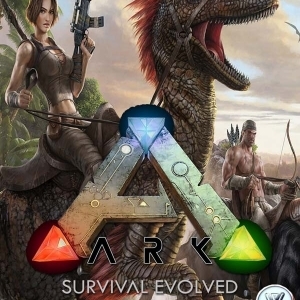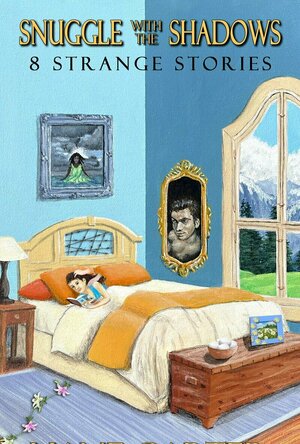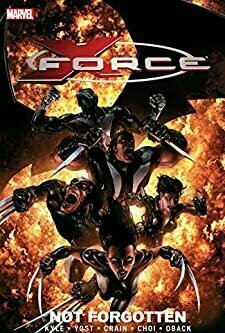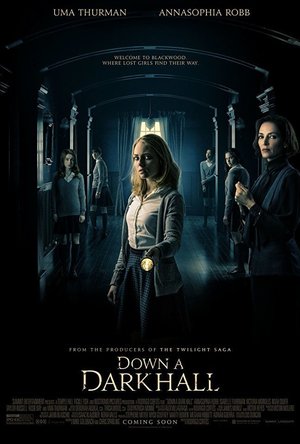Search
Search results
Kristy H (1252 KP) rated Once You Go This Far in Books
Jul 9, 2020
Probably my favorite book in the series and that's saying *a lot.*
Private investigator Roxane Weary is out for a stroll when another hiker, Rebecca Newsome, falls to her death on a nearby trail. Her daughter, Maggie, doesn't think it was an accident, and she hires Roxane to look into the the incident, believing strongly that Rebecca's ex-husband, Keir, a former cop, was responsible. Roxane learns quickly that Keir is a bit of a jerk, but did he kill his ex? Roxane soon finds herself driving between Detroit and Canada, following the path of Rebecca's last days. Soon she's embroiled in the Fellowship, a mega-church founded by Joel Creedle and talking to Constance Archer, a wealthy businesswoman who is now running for office. Roxane's running herself so ragged she can barely make time for herself, let alone Tom, her sometimes romantic interest. Not to mention, things are heating up in her case, and she may find herself in danger, yet again.
"Only bad things happened when it was cold out, as it was becoming now."
This is one of the best detective serious out there, hands down, and I wish that Kristen Lepionka and Roxane Weary were household names. I adore these books and this one may be my favorite yet, which is high praise, as I've loved every book since the first.
"That was the thing about mysteries--no one ever deviated from the routine until the moment they did."
Roxane is her own person--a witty, intelligent private investigator who, oh yeah, just happens to be bisexual (and not a side character or the villain of our tale). Book four finds her working on a perplexing case, but also dealing with some personal growth: having to confront emotions and relationships, dreaded words in Roxane's world. I loved the balance of the mystery and Roxane's personal life in this one.
"Not knowing was hard for me. It always was."
Reading these books is like falling back with familiar friends--Lepionka captures Roxane and her crew perfectly: her brothers and mom; her on again/off again boyfriend Tom and ex-girlfriend, Catherine; her work partners; and more. She expertly portrays Roxane's wonderful sarcasm and her inability to commit. Here, we see Roxane dealing with a bombshell about her father's past--poor Roxane: she can never quite escape the shadow of her father, a former cop.
But, of course, we also read for the mystery, and this is a great one--Lepionka takes us in the world of an Evangelical church while delving into Rebecca Newsome's past, her relationship with her daughter, Maggie, and the many secrets Roxane uncovers. She also throws in Rebecca's wonderful spunky elderly neighbor who keeps things lively. This was an excellent mystery that kept me guessing (and worrying for Roxane's safety)--it's timely, interesting, and suspenseful.
Highly recommend this book and the entire Roxane Weary series. 4.5 stars.
Private investigator Roxane Weary is out for a stroll when another hiker, Rebecca Newsome, falls to her death on a nearby trail. Her daughter, Maggie, doesn't think it was an accident, and she hires Roxane to look into the the incident, believing strongly that Rebecca's ex-husband, Keir, a former cop, was responsible. Roxane learns quickly that Keir is a bit of a jerk, but did he kill his ex? Roxane soon finds herself driving between Detroit and Canada, following the path of Rebecca's last days. Soon she's embroiled in the Fellowship, a mega-church founded by Joel Creedle and talking to Constance Archer, a wealthy businesswoman who is now running for office. Roxane's running herself so ragged she can barely make time for herself, let alone Tom, her sometimes romantic interest. Not to mention, things are heating up in her case, and she may find herself in danger, yet again.
"Only bad things happened when it was cold out, as it was becoming now."
This is one of the best detective serious out there, hands down, and I wish that Kristen Lepionka and Roxane Weary were household names. I adore these books and this one may be my favorite yet, which is high praise, as I've loved every book since the first.
"That was the thing about mysteries--no one ever deviated from the routine until the moment they did."
Roxane is her own person--a witty, intelligent private investigator who, oh yeah, just happens to be bisexual (and not a side character or the villain of our tale). Book four finds her working on a perplexing case, but also dealing with some personal growth: having to confront emotions and relationships, dreaded words in Roxane's world. I loved the balance of the mystery and Roxane's personal life in this one.
"Not knowing was hard for me. It always was."
Reading these books is like falling back with familiar friends--Lepionka captures Roxane and her crew perfectly: her brothers and mom; her on again/off again boyfriend Tom and ex-girlfriend, Catherine; her work partners; and more. She expertly portrays Roxane's wonderful sarcasm and her inability to commit. Here, we see Roxane dealing with a bombshell about her father's past--poor Roxane: she can never quite escape the shadow of her father, a former cop.
But, of course, we also read for the mystery, and this is a great one--Lepionka takes us in the world of an Evangelical church while delving into Rebecca Newsome's past, her relationship with her daughter, Maggie, and the many secrets Roxane uncovers. She also throws in Rebecca's wonderful spunky elderly neighbor who keeps things lively. This was an excellent mystery that kept me guessing (and worrying for Roxane's safety)--it's timely, interesting, and suspenseful.
Highly recommend this book and the entire Roxane Weary series. 4.5 stars.
Heather Cranmer (2721 KP) rated Snuggle with the Shadows: 8 Strange Stories (The Snuggle Series #2) in Books
Aug 5, 2021
After loving the first book in The Snuggle Series, I was really looking forward to reading Snuggle with the Shadows by Liane Carter. Just like with the first book in the series, I was not left disappointed.
I found Snuggle with the Shadows to be a little different than Snuggle with the Strange (the first book in the series). In this book, there were a couple of feel good stories unlike the first book in the series. Even though there were some supernatural/paranormal stories, those elements weren't as present in Snuggle with the Shadows. That wasn't a bad thing though! Although the pacing was slower for some stories in this book, I still found myself not wanting to put this book down. The world building was still done fantastically, and I found myself instantly transported to the setting of each story. There were even some plot twists in many of the stories. Even though there are no real cliff hangers with each story, some are open to speculation such as Raisha's Reason. I loved that The Tragedy of the Tides and I was Bought at a Garage Sale were feel good stories which changed up the tone of the series a little. My favorite stories in Snuggle with the Shadows were I was Bought at a Garage Sale and A Bump in the Night. Both of these stories really held my attention, and I was enthralled throughout trying to figure out what would happen. Just like with the first book in the series, Snuggle with the Shadows has a mixture of realistic stories as well as paranormal/supernatural stories.
Liane Carter kills it again with how great her characters are! They are all well written and feel like they could actually be real life people instead of a character in a book. I had no problems picturing each and every character in my mind. I actually found myself wanting to be friends with some of the characters in Snuggle with the Shadows.
Snuggle with the Shadows is a dark adult horror book, so there are quite a few heavy triggers. These include mentions of drug use, profanity, sexual comments, sexual situations, human (child) trafficking, implied child rape and molestation, death, murder, mentions of suicide, and gun violence.
All in all, Snuggle with the Shadows is an interesting read full of entertaining characters and plots. I really believe all horror lovers (and even non-horror lovers) will enjoy all the stories in this book. I would definitely recommend Snuggle with the Shadows by Liane Carter to those aged 16+ who like all sub-genres of horror. This book will not disappoint!
--
(A special thank you to Liane Carter and Lola's Blog Tours for providing me with a paperback of Snuggle with the Shadows: 8 Strange Stories in exchange for an honest and unbiased review.)
I found Snuggle with the Shadows to be a little different than Snuggle with the Strange (the first book in the series). In this book, there were a couple of feel good stories unlike the first book in the series. Even though there were some supernatural/paranormal stories, those elements weren't as present in Snuggle with the Shadows. That wasn't a bad thing though! Although the pacing was slower for some stories in this book, I still found myself not wanting to put this book down. The world building was still done fantastically, and I found myself instantly transported to the setting of each story. There were even some plot twists in many of the stories. Even though there are no real cliff hangers with each story, some are open to speculation such as Raisha's Reason. I loved that The Tragedy of the Tides and I was Bought at a Garage Sale were feel good stories which changed up the tone of the series a little. My favorite stories in Snuggle with the Shadows were I was Bought at a Garage Sale and A Bump in the Night. Both of these stories really held my attention, and I was enthralled throughout trying to figure out what would happen. Just like with the first book in the series, Snuggle with the Shadows has a mixture of realistic stories as well as paranormal/supernatural stories.
Liane Carter kills it again with how great her characters are! They are all well written and feel like they could actually be real life people instead of a character in a book. I had no problems picturing each and every character in my mind. I actually found myself wanting to be friends with some of the characters in Snuggle with the Shadows.
Snuggle with the Shadows is a dark adult horror book, so there are quite a few heavy triggers. These include mentions of drug use, profanity, sexual comments, sexual situations, human (child) trafficking, implied child rape and molestation, death, murder, mentions of suicide, and gun violence.
All in all, Snuggle with the Shadows is an interesting read full of entertaining characters and plots. I really believe all horror lovers (and even non-horror lovers) will enjoy all the stories in this book. I would definitely recommend Snuggle with the Shadows by Liane Carter to those aged 16+ who like all sub-genres of horror. This book will not disappoint!
--
(A special thank you to Liane Carter and Lola's Blog Tours for providing me with a paperback of Snuggle with the Shadows: 8 Strange Stories in exchange for an honest and unbiased review.)
Sarah (7800 KP) rated The Rhythm Section (2019) in Movies
Nov 29, 2020
An average thriller
The Rhythm Section is a 2020 action thriller based on a book of the same name written by Mark Burnell. Directed by Reed Moreno, it stars Blake Lively as Stephanie Patrick, a young woman bent on revenge against the terrorists who orchestrated a plane crash that killed her entire family.
From the very beginning, you can see the influences and similarities in this to other films and stories.
This has obviously taken inspiration from the likes of John Le Carre and is a rather dark and gritty take on the action thriller genre, with a decent amount of physical (and well choreographed) violence. However in all honesty, the originality here is severely lacking. I’ve seen countless revenge films and this is no different. There is little in this to make it stand out above all those that have come before it and it isn’t helped by a limited number of action scenes either to help ramp up the interest.
It doesn’t start off very well, as we find out about Stephanie’s life and how the death of her family turned her into a drug addict and a prostitute. It’s so clichéd that even Jude Law’s character Boyd mocks her for this later in the film, which whilst fun, doesn’t change the fact that they actually used this idea in the plot. There’s also the sketchy almost nonexistent reason for journalist Proctor (Raza Jeffrey) to reach out to Stephanie to tell her that the plane crash was caused by terrorists rather than an accident. It just doesn’t make any sense as to why he’d get Stephanie involved and the film doesn’t even try to explain this rationally. Same goes when Boyd takes in Stephanie and starts to train her as an assassin. Whilst a reason is eventually revealed, it isn’t entirely plausible and again doesn’t make any sense as to why he does this with a woman who has no background or knowledge in espionage or assassination.
Aside from the sketchy plot, there are some plus points. Blake Lively performs well (despite the often hideous wigs), and you can see that she’s really giving it her all and could really make it as an action star. The scenes featuring her and Jude Law are also entertaining to watch and give the film a more relaxed feeling, especially the earlier training scenes. One of the most likeable things about this thought for me was the score. It’s tense and dramatic and full of excitement, with pieces featuring strings, piano and percussion to the point where you begin to wonder if the title ‘The Rhythm Section’ isn’t more appropriate for the music rather than the explanation given during the film.
Sadly The Rhythm Section is a fairly average thriller that whilst boosted slightly by a good performance and score, is unfortunately not particularly memorable, especially with such a lacklustre ending.
From the very beginning, you can see the influences and similarities in this to other films and stories.
This has obviously taken inspiration from the likes of John Le Carre and is a rather dark and gritty take on the action thriller genre, with a decent amount of physical (and well choreographed) violence. However in all honesty, the originality here is severely lacking. I’ve seen countless revenge films and this is no different. There is little in this to make it stand out above all those that have come before it and it isn’t helped by a limited number of action scenes either to help ramp up the interest.
It doesn’t start off very well, as we find out about Stephanie’s life and how the death of her family turned her into a drug addict and a prostitute. It’s so clichéd that even Jude Law’s character Boyd mocks her for this later in the film, which whilst fun, doesn’t change the fact that they actually used this idea in the plot. There’s also the sketchy almost nonexistent reason for journalist Proctor (Raza Jeffrey) to reach out to Stephanie to tell her that the plane crash was caused by terrorists rather than an accident. It just doesn’t make any sense as to why he’d get Stephanie involved and the film doesn’t even try to explain this rationally. Same goes when Boyd takes in Stephanie and starts to train her as an assassin. Whilst a reason is eventually revealed, it isn’t entirely plausible and again doesn’t make any sense as to why he does this with a woman who has no background or knowledge in espionage or assassination.
Aside from the sketchy plot, there are some plus points. Blake Lively performs well (despite the often hideous wigs), and you can see that she’s really giving it her all and could really make it as an action star. The scenes featuring her and Jude Law are also entertaining to watch and give the film a more relaxed feeling, especially the earlier training scenes. One of the most likeable things about this thought for me was the score. It’s tense and dramatic and full of excitement, with pieces featuring strings, piano and percussion to the point where you begin to wonder if the title ‘The Rhythm Section’ isn’t more appropriate for the music rather than the explanation given during the film.
Sadly The Rhythm Section is a fairly average thriller that whilst boosted slightly by a good performance and score, is unfortunately not particularly memorable, especially with such a lacklustre ending.
Joe Goodhart (27 KP) rated X-Force, Volume 3: Not Forgotten in Books
Nov 30, 2020
After a brief hiatus, I resumed reading the X-FORCE TPBs, jumping with the third volume of Craig Kyle & Christopher Yost's dark run of X-FORCE.
This trade made up the "Not Forgotten" story arc, which sees the return of Kimura, bringing with her a whole boatload of hateful hurtin' for Laura (X-23). It is also saw some well-deserved (!) hostility on Wolverine's part toward Cry-clops for the casualties suffered in the team's hunt for Hope Summers as well as Laura being kidnapped. And, like the little b he has been all his life (sorry, not a fan of Scott Summers, but it's totally cool if you are), he just says "I know" when Wolverine tells him that it will death for him if either of the two students die. Wow!
Varied opinions on the art (again). I have always been fond of Clayton Crain's art style, especially his attention to facial details, so his art on the first two issues of the trade was outstanding! He brought a darkness mixed with creepiness to the way he drew the Leper Queen. WIN!
And that brings us to the art for the remaining three issues in the trade. I also like Mike Choi's facial details on the characters he draws. However, his attention to women's breasts and his intent to make all the women under his pencils to be well-endowed is a bit uncomfortable, especially in regard to Laura (who is supposed to be age 16, as stated by Domino in Issue 20. No need for it to be as such, to be honest.
Even more offensive was the way Rahne Sinclair, in wolf-form, was rendered like an extra in a hip-hop video (!). Come on, Rahne has always had a tiny form, never rendered like this EVER! Tho' I am sure a more than fair amount of 'shippers (I assume Rahne has 'shippers) feel differently about that. Jus' sayin'..
<a href="https://ibb.co/csQdiy"><img src="https://thumb.ibb.co/csQdiy/Xforce18_rahnegotback.jpg"; alt="Xforce18 rahnegotback" border="0" /></a>
So, art quibbling aside, the story, still continuing to be written by Yost and Kyle since it's return in 2008, was all aces! There was more than enough adrenaline-fueled excitement contained within, providing a white-knuckled ride, leading directly into the next volume of X-Force, NECROSHA!
I will advise this one, like the previous two volumes, is dark AF! There is very little, if any, humor. There is a higher violence output in this one as well, but it is warranted for sure, when you considered the odds they're up against! That said, if you can handle all that, then I encourage you to pick this one up!
Also, if you are fan of Laura Kinney/X-23, then I also encourage you, as it will give more backstory to her character.
This trade made up the "Not Forgotten" story arc, which sees the return of Kimura, bringing with her a whole boatload of hateful hurtin' for Laura (X-23). It is also saw some well-deserved (!) hostility on Wolverine's part toward Cry-clops for the casualties suffered in the team's hunt for Hope Summers as well as Laura being kidnapped. And, like the little b he has been all his life (sorry, not a fan of Scott Summers, but it's totally cool if you are), he just says "I know" when Wolverine tells him that it will death for him if either of the two students die. Wow!
Varied opinions on the art (again). I have always been fond of Clayton Crain's art style, especially his attention to facial details, so his art on the first two issues of the trade was outstanding! He brought a darkness mixed with creepiness to the way he drew the Leper Queen. WIN!
And that brings us to the art for the remaining three issues in the trade. I also like Mike Choi's facial details on the characters he draws. However, his attention to women's breasts and his intent to make all the women under his pencils to be well-endowed is a bit uncomfortable, especially in regard to Laura (who is supposed to be age 16, as stated by Domino in Issue 20. No need for it to be as such, to be honest.
Even more offensive was the way Rahne Sinclair, in wolf-form, was rendered like an extra in a hip-hop video (!). Come on, Rahne has always had a tiny form, never rendered like this EVER! Tho' I am sure a more than fair amount of 'shippers (I assume Rahne has 'shippers) feel differently about that. Jus' sayin'..
<a href="https://ibb.co/csQdiy"><img src="https://thumb.ibb.co/csQdiy/Xforce18_rahnegotback.jpg"; alt="Xforce18 rahnegotback" border="0" /></a>
So, art quibbling aside, the story, still continuing to be written by Yost and Kyle since it's return in 2008, was all aces! There was more than enough adrenaline-fueled excitement contained within, providing a white-knuckled ride, leading directly into the next volume of X-Force, NECROSHA!
I will advise this one, like the previous two volumes, is dark AF! There is very little, if any, humor. There is a higher violence output in this one as well, but it is warranted for sure, when you considered the odds they're up against! That said, if you can handle all that, then I encourage you to pick this one up!
Also, if you are fan of Laura Kinney/X-23, then I also encourage you, as it will give more backstory to her character.
Sarah (7800 KP) rated Bloodshot (2020) in Movies
Oct 9, 2020
Brainless fun
Bloodshot is not the kind of film I’d waste my time going to watch at the cinema, however I jumped at the opportunity to watch it in the comfort of my own home where I could tune out and do other things if it got dull. And I’m rather pleasantly surprised to admit that it never did.
Bloodshot is based on a Valiant comic of the same name which tells the story of Ray Garrison, a soldier killed and brought back to life with the use of nanites, giving him superhuman powers and a thirst for revenge.
Going into this film I knew nothing about it, I hadn’t even seen a trailer. My only misgiving was regarding Vin Diesel, who like Keanu Reeves, is great to watch in action but sadly his acting skills leave a little to be desired. Surprisingly I didn’t mind Vin Diesel in this, and it probably stems from the fact that he spends most of his time in action with very little opportunity for any more meaningful or emotional scenes (thankfully).
The first half of this film had me worried. It opens with some irritating slow motion action shots and then progresses into what is rather a predictable and done to death origin film revenge plot. There are some good points though: the action scenes and CGI were very well done and choreographed, the filming locations are beautifully shot, and the dancing scene with Toby Kebbell was a riot, almost feeling like it would’ve been better placed in something made by Tarantino rather than this.
Had the film carried on in this same vein for it’s entire runtime, I would’ve switched off. However there was a reveal halfway through that provided a much needed boost to the story and a great deal of humour, and I never saw it coming. This pushed this film from being pretty poor to fairly enjoyable and entertaining.
That isn’t to say it doesn’t have it’s flaws. Guy Pearce is playing the same character he seems to have played in everything else recently and Toby Kebbell is massively underused. The remaining members of the team are rather cliched villains or just completely forgettable. And there’s a scene towards the end with a pouting and over the top KT that is so cheesy and cringeworthy it’s laughably bad. There’s also an action scene set in London that has been obviously not been filmed in London (or in the UK at all from the look of the buildings and vehicle registrations), so there are a few missteps with the production and the finale has far too much CGI as well.
Overall I was expecting this to be atrocious and was rather pleasantly surprised to find myself laughing and enjoying it to a point. It is by no means perfect and will never win any awards, however if you’re looking for some brainless action and entertainment you could do much worse than Bloodshot.
Bloodshot is based on a Valiant comic of the same name which tells the story of Ray Garrison, a soldier killed and brought back to life with the use of nanites, giving him superhuman powers and a thirst for revenge.
Going into this film I knew nothing about it, I hadn’t even seen a trailer. My only misgiving was regarding Vin Diesel, who like Keanu Reeves, is great to watch in action but sadly his acting skills leave a little to be desired. Surprisingly I didn’t mind Vin Diesel in this, and it probably stems from the fact that he spends most of his time in action with very little opportunity for any more meaningful or emotional scenes (thankfully).
The first half of this film had me worried. It opens with some irritating slow motion action shots and then progresses into what is rather a predictable and done to death origin film revenge plot. There are some good points though: the action scenes and CGI were very well done and choreographed, the filming locations are beautifully shot, and the dancing scene with Toby Kebbell was a riot, almost feeling like it would’ve been better placed in something made by Tarantino rather than this.
Had the film carried on in this same vein for it’s entire runtime, I would’ve switched off. However there was a reveal halfway through that provided a much needed boost to the story and a great deal of humour, and I never saw it coming. This pushed this film from being pretty poor to fairly enjoyable and entertaining.
That isn’t to say it doesn’t have it’s flaws. Guy Pearce is playing the same character he seems to have played in everything else recently and Toby Kebbell is massively underused. The remaining members of the team are rather cliched villains or just completely forgettable. And there’s a scene towards the end with a pouting and over the top KT that is so cheesy and cringeworthy it’s laughably bad. There’s also an action scene set in London that has been obviously not been filmed in London (or in the UK at all from the look of the buildings and vehicle registrations), so there are a few missteps with the production and the finale has far too much CGI as well.
Overall I was expecting this to be atrocious and was rather pleasantly surprised to find myself laughing and enjoying it to a point. It is by no means perfect and will never win any awards, however if you’re looking for some brainless action and entertainment you could do much worse than Bloodshot.

The Island:Brave Heart
Games and Sports
App
The Island,Man in the Wild,Amazing Adventure.... This is a game about exploring and surviving on a...

ARK Survival Evolved
Video Game
Stranded on the shores of a mysterious island, you must learn to survive. Use your cunning to kill...
BookwormLea (3034 KP) rated Down a Dark Hall (2018) in Movies
Jul 26, 2020
Movie? Not great. Concept? Fabulous!
Contains spoilers, click to show
So I wouldn't call this a good horror. Maybe a passable thriller or drama??? Just the usual possession and strange happenings in a secluded school. (If you're looking for a better version of a similar thing, i recommend The Silenced.)
The general plot is that after her father dies when she's young, Katherine slowly becomes the stereotypical angry teen who lets the world know she hates it by letting it burn. She gets made to go to therapy after claiming she sees her father (which she does, because we watched his spirit say goodbye). She is invited to Blackwood. A mysteriously remote mansion home to 6 even more mysterious teachers, including Madame Duret, the headmistress. Kat is joined by 4 other girls of a seemingly lost cause. Duret calls them 'gifted' and 'misunderstood'. They are taught the usual lessons, Maths and English, music and art. And with the exception of Veronica (the literal definition of teenage nightmare) they all seem to excel at one thing in particular. Our lead girl Kat, music, specifically piano. She is taught by Durets son, Jules. Everything seems to be going well, one girl paints like a prodigy, another writes poems that could rock Shakespeares world, Kat does her piano thing rivalling Mozart and the last (who could basically still be in the role of Esther in Orphan) is solving maths problems that could save the world. That is until they start seeing shadows of people who aren't there, voices in their heads and they physically can't stop doing what they are gifted at, to the point where they don't eat or leave their rooms. After finding old files of other girls in similar situations who died, Kat and Veronica try to do something about it. Veronica is taken away and Kat is suddenly a Piano prodigy, almost possessed by the greats themselves. Yeah 'almost'. Because that's exactly what happened. They have been used as vessels for history's greatest men and women, who died too soon. How fantastic is that? If this movie was made better, that is a brilliant plot! But of course everything goes bad, just like their ghosts, the girls start dropping like flies, Poem girl kills herself, Painter literally starves herself, and crazy math girl is on the verge of escaping when she becomes enthralled in the beauty of the flames. Flames caused by Kat when she saves Veronica from being possessed by some weird demon thing who really doesn't get explained. They almost get out. Duret gets possseded and burned by the spirits she conjured. All the teachers die and Jules is crushed when he saves Kat. Of course there has to be surviors so Kat and Veronica get out, where on the brink of death, Kat sees her father again who makes her come back to life after she tries to go with him.
Overall, not a terrible movie, but if it had been made better, would probably be one of my favourite plots ever!
The general plot is that after her father dies when she's young, Katherine slowly becomes the stereotypical angry teen who lets the world know she hates it by letting it burn. She gets made to go to therapy after claiming she sees her father (which she does, because we watched his spirit say goodbye). She is invited to Blackwood. A mysteriously remote mansion home to 6 even more mysterious teachers, including Madame Duret, the headmistress. Kat is joined by 4 other girls of a seemingly lost cause. Duret calls them 'gifted' and 'misunderstood'. They are taught the usual lessons, Maths and English, music and art. And with the exception of Veronica (the literal definition of teenage nightmare) they all seem to excel at one thing in particular. Our lead girl Kat, music, specifically piano. She is taught by Durets son, Jules. Everything seems to be going well, one girl paints like a prodigy, another writes poems that could rock Shakespeares world, Kat does her piano thing rivalling Mozart and the last (who could basically still be in the role of Esther in Orphan) is solving maths problems that could save the world. That is until they start seeing shadows of people who aren't there, voices in their heads and they physically can't stop doing what they are gifted at, to the point where they don't eat or leave their rooms. After finding old files of other girls in similar situations who died, Kat and Veronica try to do something about it. Veronica is taken away and Kat is suddenly a Piano prodigy, almost possessed by the greats themselves. Yeah 'almost'. Because that's exactly what happened. They have been used as vessels for history's greatest men and women, who died too soon. How fantastic is that? If this movie was made better, that is a brilliant plot! But of course everything goes bad, just like their ghosts, the girls start dropping like flies, Poem girl kills herself, Painter literally starves herself, and crazy math girl is on the verge of escaping when she becomes enthralled in the beauty of the flames. Flames caused by Kat when she saves Veronica from being possessed by some weird demon thing who really doesn't get explained. They almost get out. Duret gets possseded and burned by the spirits she conjured. All the teachers die and Jules is crushed when he saves Kat. Of course there has to be surviors so Kat and Veronica get out, where on the brink of death, Kat sees her father again who makes her come back to life after she tries to go with him.
Overall, not a terrible movie, but if it had been made better, would probably be one of my favourite plots ever!
Kristy H (1252 KP) rated Dark Roads in Books
Aug 12, 2021
A dark and unsettling mystery
For years, the nearly five hundred mile stretch of Cold Creek Highway has been infamous as a place where young women go missing. Drivers, hitch hikers, and more. But their abductor has never been found. Hailey McBride lives in Cold Creek. Her father recently died in a car accident, leaving her to live with her aunt and her controlling police officer husband, Vaughn. Vaughn watches Hailey's every move, bullying and terrorizing her, keeping her from seeing her best friend, Jonny and her new love interest, Amber. Using what her dad taught her about the local land, Hailey plans her escape to the mountains. With Jonny's help, the idea is that everyone will think she was another victim of the highway killer. A year after Hailey disappears, Beth Chevalier arrives in town, desperate for closure after her sister Amber's murder. Beth's life is in shambles after Amber's death, and she starts to look into what happened. But Beth's search puts her in danger--and starts to reveal the truth about what happened to Hailey.
"I had to get out of this house, and this town."
This is a dark and often stressful book. It's told from two perspectives, Hailey and Beth. I was quite attached to Hailey, who is suffering at the hands of Vaughn, the stereotypical power-hungry small-town cop. He embodies the part of the sinister bad guy. Because he seems to control the entire town (no one will even give Hailey a job, since Vaughn doesn't want her to have one), her only choice is to go live in a shack in the mountains and basically let everyone think she's dead. The book shifts from menacing to survival-in-the-woods story and then we flip to Beth's perspective, where she's a struggling wannabe law student who arrives in Cold Creek to figure out who killed her sister (who was Hailey's love interest).
If it seems like a lot and a bit confusing, it is. I liked this book, but it did seem like it had multiple personalities. I found it tense at times (add to the fact that Hailey had a dog in the wilderness--I cannot handle books where something might happen to an animal) and other times a bit slow. Vaughn is our clear bad guy--Hailey even discovers some of his many terrible traits and crimes. But if that's true, then why are we reading? Just to catch him? At times, the book catches us off kilter, guessing and wondering. At other times, it falls a bit flat when the whole premise doesn't really seem to work. Who is our protagonist and what is the end goal?
Overall, this is an often dark and quite atmospheric book. It's creepy and twisty and sometimes heartbreaking. Is it worth reading? Yes. But I'm not sure if it ever lives up to its true potential.
I received a copy of this book from St. Martin's Press and Netgalley in return for an unbiased review.
"I had to get out of this house, and this town."
This is a dark and often stressful book. It's told from two perspectives, Hailey and Beth. I was quite attached to Hailey, who is suffering at the hands of Vaughn, the stereotypical power-hungry small-town cop. He embodies the part of the sinister bad guy. Because he seems to control the entire town (no one will even give Hailey a job, since Vaughn doesn't want her to have one), her only choice is to go live in a shack in the mountains and basically let everyone think she's dead. The book shifts from menacing to survival-in-the-woods story and then we flip to Beth's perspective, where she's a struggling wannabe law student who arrives in Cold Creek to figure out who killed her sister (who was Hailey's love interest).
If it seems like a lot and a bit confusing, it is. I liked this book, but it did seem like it had multiple personalities. I found it tense at times (add to the fact that Hailey had a dog in the wilderness--I cannot handle books where something might happen to an animal) and other times a bit slow. Vaughn is our clear bad guy--Hailey even discovers some of his many terrible traits and crimes. But if that's true, then why are we reading? Just to catch him? At times, the book catches us off kilter, guessing and wondering. At other times, it falls a bit flat when the whole premise doesn't really seem to work. Who is our protagonist and what is the end goal?
Overall, this is an often dark and quite atmospheric book. It's creepy and twisty and sometimes heartbreaking. Is it worth reading? Yes. But I'm not sure if it ever lives up to its true potential.
I received a copy of this book from St. Martin's Press and Netgalley in return for an unbiased review.
Lyndsey Gollogly (2893 KP) rated Tenacity ( Rise of Iliri book 5) in Books
Feb 1, 2022
Contains spoilers, click to show
❗️❗️❗️ spoiler in last paragraph!‼️‼️
20 of 230
Kindle
Tenacity ( Rise of Iliri book 5)
By Auryn Hadley
WAR, HEARTBREAK, MORE WAR... AND A NEW FRIEND
In the fifth heart-stopping tale of her epic fantasy series The Rise of the Iliri, Auryn Hadley interjects a compelling sci-fi action fantasy with an emotionally charged reverse harem romance, setting the heart-warming experience of everyday community against the heart-wrenching reality of war - and the loss it causes. A jarring emotional roller coaster, Tenacity tells the age-old tale of pure love amidst a struggle between good and evil - but with a heaping dose of the light-hearted, cross-cultural birds and bees. This one has plenty of laughs. And plenty of heartbreak.
Slowly, region by region, the Lieutenant Salryc Luxx and her elite Black Blades are pushing forward and liberating an enslaved nation from the emperor's reign of terror. But the battle's not without consequence.
While scoping out the quiet remains of a fallen town - too quiet, actually - they discover scores of slaughtered families. But they also discover life: a young girl, locked in a cage below a tavern. No one is certain exactly what she is. She has unusual streaks of red, blonde, and white hair, and two different-colored eyes. She's fluent in iliri language, and she's terrified. So terrified that when an officer approaches to unlock her, her fear burns a hole in his armor.
The girl's name is Shaden. She's too young to know what exactly her talents are, or how to control them, but she's powerful. Immediately recognizing Sal as the fabled Kaisae, she trusts only Sal. Meanwhile, as the Black Blades continue their assault on a city thought to be impenetrable, Shaden manages to harness her power to help keep her newfound family of warriors safe. But for Sal's part, Shaden triggers difficult emotional memories of her own enslavement as a girl. And her longing to free anyone she can
With every win, Sal is bombarded by the thanks of those she rescued, and the disdain of those whose families she could not save. She can't sleep, she can't eat ... but she cannot stop fighting, either.
Victory is near. The Emperor is losing. He knows this. He knows Sal's responsible, and he knows exactly how to destroy her - go after those she loves most.
There’s me going a long nicely really enjoying the book and being back with Sal and her guys the Bam!!!! Not only does Balaec get killed in front of her she has to watch the dogs eat him! My heart broke this was a character death I won’t forget in a hurry poor Sal. Poor black blades. This was another brilliant book from a series I absolutely love! I just need to hide this one in the freezer (if you know you know) .
20 of 230
Kindle
Tenacity ( Rise of Iliri book 5)
By Auryn Hadley
WAR, HEARTBREAK, MORE WAR... AND A NEW FRIEND
In the fifth heart-stopping tale of her epic fantasy series The Rise of the Iliri, Auryn Hadley interjects a compelling sci-fi action fantasy with an emotionally charged reverse harem romance, setting the heart-warming experience of everyday community against the heart-wrenching reality of war - and the loss it causes. A jarring emotional roller coaster, Tenacity tells the age-old tale of pure love amidst a struggle between good and evil - but with a heaping dose of the light-hearted, cross-cultural birds and bees. This one has plenty of laughs. And plenty of heartbreak.
Slowly, region by region, the Lieutenant Salryc Luxx and her elite Black Blades are pushing forward and liberating an enslaved nation from the emperor's reign of terror. But the battle's not without consequence.
While scoping out the quiet remains of a fallen town - too quiet, actually - they discover scores of slaughtered families. But they also discover life: a young girl, locked in a cage below a tavern. No one is certain exactly what she is. She has unusual streaks of red, blonde, and white hair, and two different-colored eyes. She's fluent in iliri language, and she's terrified. So terrified that when an officer approaches to unlock her, her fear burns a hole in his armor.
The girl's name is Shaden. She's too young to know what exactly her talents are, or how to control them, but she's powerful. Immediately recognizing Sal as the fabled Kaisae, she trusts only Sal. Meanwhile, as the Black Blades continue their assault on a city thought to be impenetrable, Shaden manages to harness her power to help keep her newfound family of warriors safe. But for Sal's part, Shaden triggers difficult emotional memories of her own enslavement as a girl. And her longing to free anyone she can
With every win, Sal is bombarded by the thanks of those she rescued, and the disdain of those whose families she could not save. She can't sleep, she can't eat ... but she cannot stop fighting, either.
Victory is near. The Emperor is losing. He knows this. He knows Sal's responsible, and he knows exactly how to destroy her - go after those she loves most.
There’s me going a long nicely really enjoying the book and being back with Sal and her guys the Bam!!!! Not only does Balaec get killed in front of her she has to watch the dogs eat him! My heart broke this was a character death I won’t forget in a hurry poor Sal. Poor black blades. This was another brilliant book from a series I absolutely love! I just need to hide this one in the freezer (if you know you know) .







